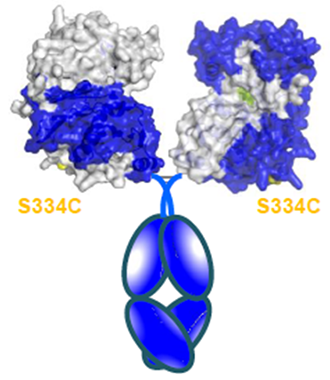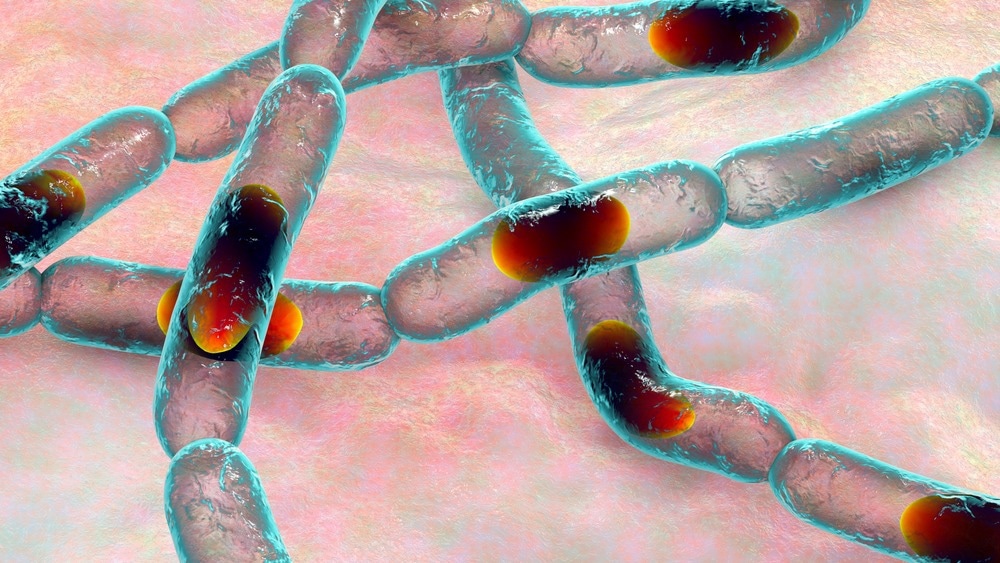Reviewed by Danielle Ellis, B.Sc.Sep 15 2022
Anthrax-causing spores were mailed to news outlets and members of Congress during the “Amerithrax” strikes of 2001, inflicting at least 22 illnesses and leaving five people dead. Researchers are gearing up to combat the bacteria’s antibiotic-resistant variants, which are a rising source of concern.
 This engineered enzyme with bits of antibody stuck to it can break apart the capsule of B. anthracis bacteria, allowing the immune system to fight back. Image Credit: Adapted from ACS Infectious Diseases.
This engineered enzyme with bits of antibody stuck to it can break apart the capsule of B. anthracis bacteria, allowing the immune system to fight back. Image Credit: Adapted from ACS Infectious Diseases.
Now, a team has made progress toward the creation of a therapy that can treat the infection in mice without the use of antibiotics, as reported in ACS Infectious Diseases.
Bacillus anthracis is a type of bacteria that can cause anthrax infection by ingesting, inhaling, or coming into contact with its spores through a skin wound. The infection may cause respiratory problems, skin ulcers, or even death. Despite the fact that there are antibiotics to treat anthrax infections, drug resistance might develop over time.

Image Credit: Kateryna Kon/Shutterstock.com
As it can encase itself in a protective capsule made of poly-D-glutamic acid, one strain of B. anthracis known as the Ames strain is especially dangerous and helps the bacteria elude the human immune system. According to earlier research, the B. anthracis enzyme CapD, which ties the capsule material to the bacteria, can also be modified to destroy the capsule, exposing the bacteria to the immune system.
Studies have demonstrated that giving mice modified CapD can aid in the treatment of an Ames-strain anthrax infection without the need for medicines. Furthermore, Patricia Legler and associates have shown that adding polyethylene glycol (PEG) to this variation of CapD can aid in the enzyme’s persistence, enhancing mouse survival. The group aimed to further improve the treatment in this investigation.
The scientists combined the CapD protein with a portion of a mouse antibody to increase the lifespan of the re-engineered enzyme in the body and give it more punch. They also added PEG. Two CapD enzymes were consequently linked together, thereby increasing their ability to bind capsules.
The scientists developed various iterations of the enzyme and put them through numerous phases of optimization, deleting and adding various parts, until they were able to build a sequence that kept its 3D shape and worked as expected over a range of pH levels.
This design exhibited decreased activity, but it persisted longer in a mouse model than the prior one without the fusion antibody. The discoveries are a significant step toward a better treatment against antibiotic-resistant B. anthracis strains, according to the researchers, though the additional study is required to create the optimum design.
Source:
Journal reference:
Matharoo, K., et al. (2022) Engineering an Fc-Fusion of a Capsule Degrading Enzyme for the Treatment of Anthrax. ACS Infectious Diseases. doi.org/10.1021/acsinfecdis.2c00227.